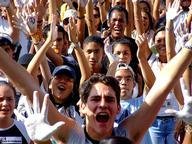Quiz Answer Key and Fun Facts
1. Why is it Johns Hopkins and not John Hopkins?
2. Who or what is "Hopkins Best"?
3. In what year was Johns Hopkins University founded? (That's the University, not the Medical School.)
4. The main University campus is situated on, and named after, this Georgian-Federalist era estate in northern Baltimore.
5. What is JHU's sports mascot?
6. This President of the United States received his Ph.D. from Johns Hopkins.
7. This distinguished educator was appointed President of JHU while his brother was President of the United States.
8. The University's School of Public Health was founded in 1916, and is the oldest and largest school of its kind in the world. It is named for a famous JHU alumnus/alumna from a different field.
9. Founded in 1857, this venerable "Institute" became a University division in 1977.
10. In 1874, the University Trustees received this answer from Harvard's President Charles W. Eliot: "a thoroughly wrong idea which is rapidly disappearing . . . [it] is not possible in highly civilized communities." The Trustees agreed, at the time. What was the question?
11. Phantom alumni: which of the following fictional characters did NOT attend Johns Hopkins?
12. You need a boost for your looming Organic Chemistry final. According to JHU legend, what should you do?
13. "The Hut" is one of the most popular venues at JHU. What is it?
14. Remsen Hall is named after JHU's second President, Ira Remsen, who discovered saccharin in 1878. Sweet. It houses this unusual item.
15. Shriver Hall is the University's main theater. It features several murals -- but this one is bizarre.
Source: Author
ignotus
This quiz was reviewed by FunTrivia editor
Bruyere before going online.
Any errors found in FunTrivia content are routinely corrected through our feedback system.


